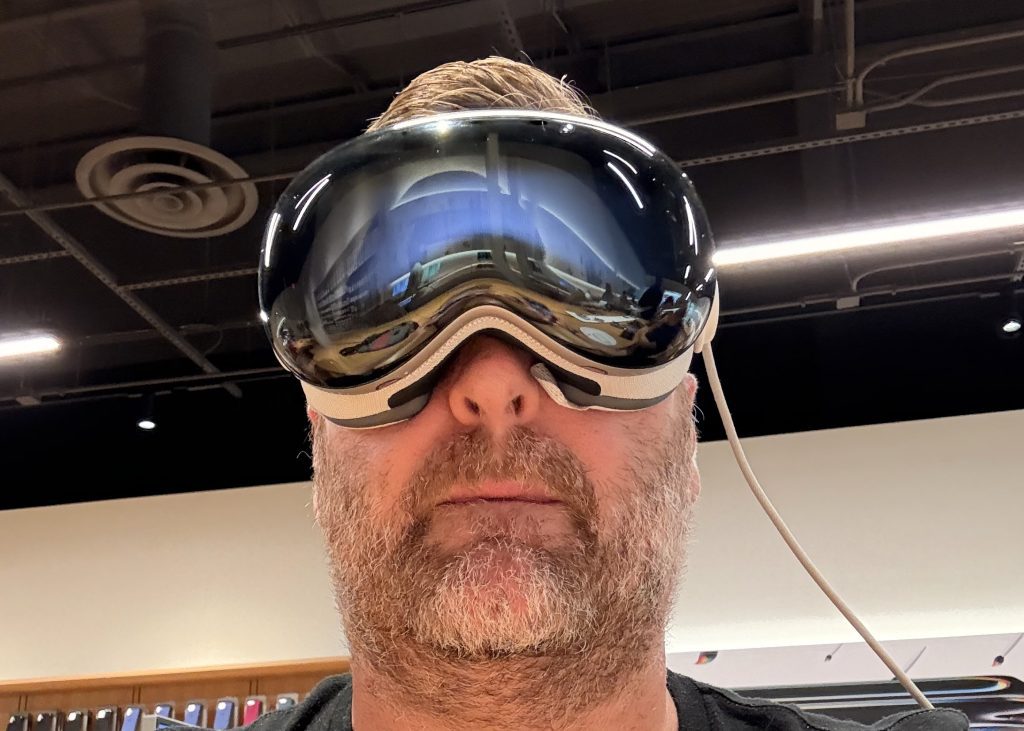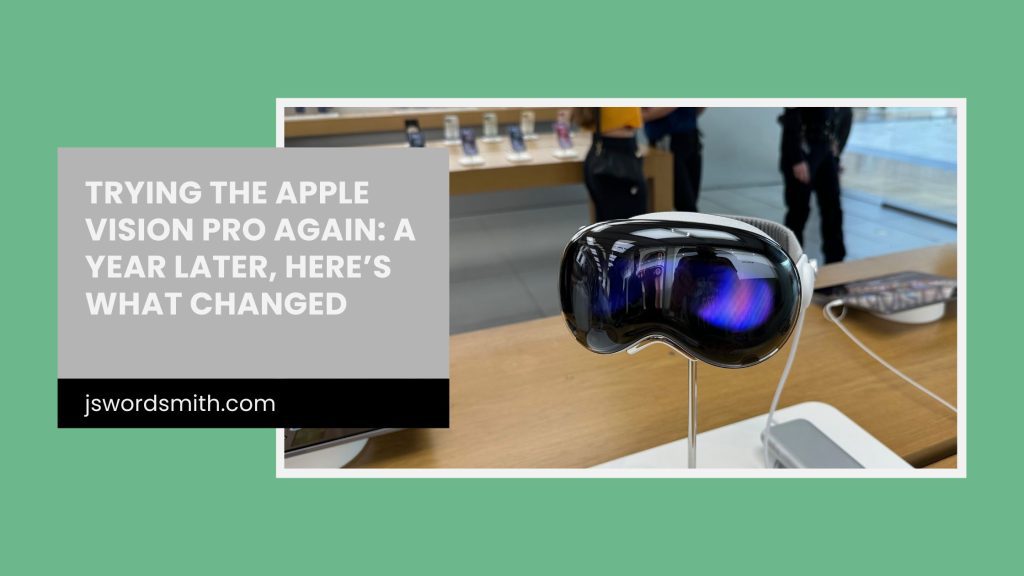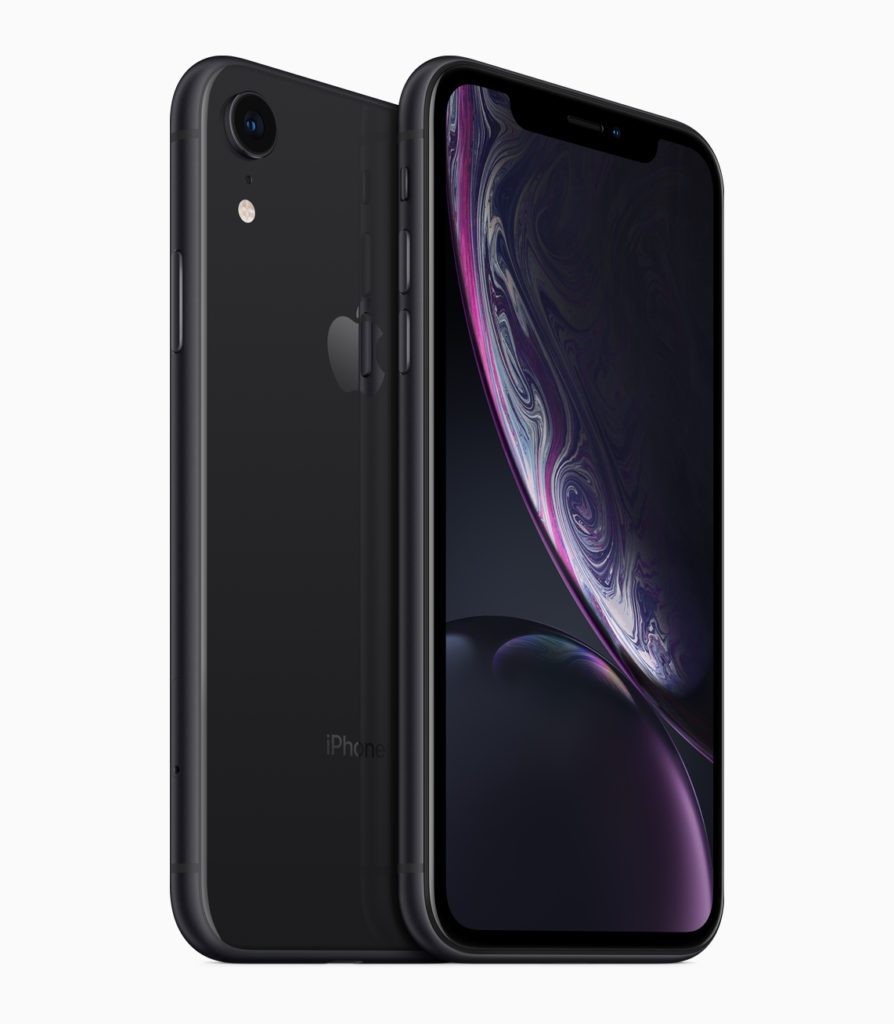I still want an Apple Vision Pro. But at $4,000, it’s hard to justify—especially when I’m not sure how I’d use it.
But I still want it.
It’s new tech with a smooth user experience. So, when I recently had to go into the Apple Store for a Genius appointment, I thought I would take my second demo of the Apple Vision Pro. I want to see what’s changed, what I thought about the tech, and if it has evolved enough to make it easier to integrate into anyone’s workflow.
The Apple Employees Running The Demo
I took my first Apple Vision Pro demo on launch day. The excitement of a new product launch from Apple, combined with the need to take a break from raising my kids, prompted me to arrive at the Apple Store early. Brad helped me through the demo that day, and over a year later, Brad helped me with my second demo.
I could tell that Brad felt passionate about the tech. He and I discussed a broad range of things while we scanned my face to get the correct light seal. We discussed how much the Apple Vision Pro has changed in a year, the new iPadOS 26 developer beta, and a few other Apple-related topics. Brad appeared as enthusiastic as I did about it all.
He also asked me if there was anything I wanted to try out on my demo this time, and he would do his best to make it happen. Brad recounted how Apple sent him to Apple Park to receive training on the Vision Pro, and he expressed his excitement about experiencing it.
At the same time, another employee shadowed Brad during the demo for training purposes. I don’t remember his name, but he seemed excited and helped to facilitate my demo.
For the most part, it felt a little like a learning experience for all of us, as I’ll recount. We attempted to incorporate some features that don’t typically appear in a demo, but are highlights of the Apple Vision Pro.
The Same Apple Vision Pro Demo From a Year Ago

This demo really felt like the first with a few little updates. It started with Brad asking if I remembered all the gestures; he still walked me through them.
Then I had to calibrate my vision for the device. Brad walked me through a few things, such as how to push the button to bring up the apps.
While I understand the guided tour, I would really like to be let loose on the device to try it out. Of course, I would need a few other things, like a keyboard and a Mac, to really put it through its paces.
The demo is designed to showcase the system. The focus is on walking you through navigating the Apple Vision Pro interface. You learn how to pinch and gesture to move things around, how to access your apps, and then they show you the apps.
If you haven’t done a demo in a while, you may want to take some time to revisit it, as there have been some updates.
The Updates
The Vision Pro may appear stagnant since the hardware hasn’t been updated since its release over a year ago, but the software has continued to improve.
A New Strap
The first time I did my demo, the demo unit had the Solo Knit loop, the fancy adjustable strap that went around your head, not over it. I don’t remember feeling any particular way about it, honestly. The online discussion seems to suggest that the strap is all form and no function.
This time, my demo unit came with the two-strap system, one of which goes around and the other goes over your head. I didn’t like it. Of course, it probably does help alleviate some of the discomfort of the heavy device, but I didn’t feel comfortable. Apple needs to find a way to make this device lighter and more comfortable to make it effective.
But once it was adjusted, we got into the demo.
Apple Vision Pro Makes Photos So Real
I remember looking at the photos on the demo device last year and thinking that they looked impressive. I wondered if I would be as impressed with my own photos. Would I need to constantly shoot pictures in Spatial mode if I wanted to enjoy those?
A few of those questions got answered. One of the things they showed me this time was how Apple had developed an algorithm to convert normal photos into Spatial photos with a button. The Vision Pro processes the image and converts it to look three-dimensional. There is a parallax effect as you move around, and the subject seems like it is right in front of you.
This algorithm will be available on Apple devices when iOS, iPadOS, and macOS 13 launch. While you won’t get to see the photo in full 3D there, the images will have a parallax effect, which also allows you to tilt your phone and see your photo move. The tech is similar to Facebook’s 3D photos, which it launched a few years ago for portrait photos.
When you look at a simple photo, the view is still confined to a window, as if you were looking at a computer screen, but you can also press a button to have the photo expand and fill the entire area. It felt thrilling to get truly immersed in the photo.
Your Own Photos
I remembered Apple came up with a way for users to demo their own pictures on the Apple Vision Pro. I must have been the first person to ask about that for my demo, because the trainee and Brad both had a discussion about it with a bit of shock.
Brad figured it out pretty quickly. He had a QR code for me to scan on his iPad mini, from which he ran the demo. Once I scanned it on my phone, it allowed me to select the pictures I wanted to view in spatial computing from my iPhone 16 Plus, before I even put the Vision Pro on.
Since I bought my iPhone 16 Plus, I’ve taken the opportunity to take a handful of Spatial photos and videos for the future. I figure it will only be a matter of time before these become affordable enough that I’ll get one, so I’d like to have a few photos of my kids while they’re young. I selected those pictures and videos to view, along with a few non-spatial images, to see how it goes.
Once I put the Vision Pro on and calibrated it, Brad held up the tablet for me to scan a new QR code. I looked at the code inside the visor, and it scanned the code. This opened the Photos app on the Apple Vision Pro, where the media I had selected was waiting.
Brad instructed me that the Apple Vision Pro would delete my photos once I finished my demo, ensuring the safety of my photos. While I viewed my images, Brad mentioned to the trainee that the device blacked out the window because of my personal content.
The photos themselves blew me away. I watched a video I had taken of my son and wife at karate class, which I had shot in Spatial video. I felt like I was on the mat with the pair. I couldn’t believe how real it felt. I didn’t feel like I was watching a video; it felt like a slice of life. I watched the video several times, trying to take in everything.
However, if you turn your head away from the video, you don’t see the things shot behind you or anything. The video is still in a window, one that you can expand to a giant size, but you aren’t actually inside it. Still, the people in the video felt like they were right in front of me.
All my photos looked great, too. The ones in Spatial came through without any conversion, and the subjects popped. You could tilt your head and get different angles. However, these didn’t feel like photos; they felt like slices of life. It felt like my kids and wife were right in front of me.
If there were a reason for me to buy one of these devices, I think this would be it. But there’s no way to view these pictures with anyone. You could send it, but I couldn’t pull one up with my wife and reminisce about it. And honestly, I struggle to put into words how amazing it is to see these photos like this. There are only so many times I can say the same thing about it. However, it is truly mind-bending to view.
Opening Notes And Using The Frustrating Keyboard
Once I had spent enough time loving my photos, Brad asked me what I wanted to explore next. I told him that I wanted to see what it would be like working on the device, so he told me to open up the Notes app.
Opening the app felt the same as on the iPad or Mac, but I liked that I could make the window as large as I wanted and position it as close or far away as I needed.
I could imagine a world where I wouldn’t need a monitor anymore. I could have all my windows open in the world around me, instead of constrained on a screen—but not for four thousand dollars. My Studio Display works fine for now.
Brad then recommended that I use Vision Pro’s keyboard.
I hated it. I don’t see any way that I could get any writing done with it. The on-device keyboard didn’t pick up my fingers at all when trying to type, and the auto-correct didn’t do anything to help. The other option on the device is to look at the letter you want and pinch to select it. It would take forever to type anything longer than a word or two, so that wouldn’t work.
But you can pair a keyboard to the Apple Vision Pro. Sadly, they didn’t have one floating around for me to try. That said, they didn’t grab a MacBook Pro to attempt to pair with the Vision Pro. I wanted a better typing experience, and they wanted to show me the virtual Mac desktop.
Unfortunately, we were unable to get the two devices to communicate. I bet that all the Macs inside the store made it difficult to pair. However, I felt grateful that they tried to make it work. Again, something I don’t think they do very often, if at all.
Engine App
Brad had me try a new app that wasn’t on the demo the first time. At least, I didn’t remember it being there.
This app had me add an airplane engine to the room and then toy with it. I could turn it, make it larger, or even start removing pieces. The app didn’t hold my interest for long, but I will say I felt like Tony Stark as I flung my hands around to pivot the engine, make it larger, or throw some pieces out.
During this part of the demo, a lady sat across the table from me. At points, I apologized to her and Brad as I tinkered with the engine. They couldn’t see that I had thrown engine parts at them and looked at me strangely. But swear, it felt as if I were inconveniencing.
It messed with my mind so much (in a good way).
New 3D and Immersive Movies
We concluded the demo with some new video content, which was also included in my initial demo. This time, though, Brad showed me how to make it appear as if I sat in a theater before starting a clip from Avatar: The Way of Water. The 3D effects looked nice, but I’ve never been one to love 3D movies. Sitting in a “movie theater” to watch it didn’t change anything for me.
He encouraged me to try the new immersive clip video, which has a woman tightrope walking, animals, dinosaurs, and concerts in immersive video. I enjoyed it, but I had already seen something very similar before. It didn’t wow me.
Finally, we ended with the immersive movie Submerged, a movie about a wartime submarine. The film puts you in the center of the action. While there is usually something happening, like a leak in the hull, you can look wherever you want. The people are moving all around. Of course, looking straight ahead was the easiest, and it felt like the movie tried to put the action there for your sake.
As the submarine filled with water, I held my breath.
I’m not sure I would like to watch a full movie shot like this yet, but I enjoyed my screening of this one. It felt surreal to look around the submarine as events unfolded. I can imagine rewatching this with a better understanding of when things would happen and focusing my attention there. It could make for some excellent repeat viewing.
Verdict: Has The Apple Vision Pro Evolved Enough?
The Apple Vision Pro has improved in nearly every aspect since my first demo. Each year, Apple advances the platform, although there aren’t many users yet.
However, the device costs too much. It won’t reach a mass market appeal unless it lowers that price. However, I wonder if the device will ever catch on. Meta’s much cheaper version is out there, and doing well, but is it a viable market, really? Will people use these devices for work or to watch videos? I don’t think I would replace my entire setup for one of these devices. Besides the price, you can’t share the device with anyone, so my wife or kids wouldn’t be able to use it.
That said, the experience at the demo feels very next-generation. The fact that I felt compelled to apologize for flinging a virtual sprocket at the lady across the desk from me says something about the tech and how amazing it feels to use. Throughout all of my demos, these artificial things felt so real. I think that’s the best thing about the device.
The Vision Pro is the most futuristic tech I’ve tried, but until Apple makes it lighter, more shareable, and far cheaper, it’ll remain a demo dream, not a daily device.
Do you have any questions about the Apple Vision Pro demo or the device itself? Let me know in the comments or on any social media, Threads, Mastodon, Bluesky, or Facebook.
Also, make sure you’ve signed up for the mailing list to see when new posts and stories get published.
Discover more from JSwordSmith
Subscribe to get the latest posts sent to your email.


